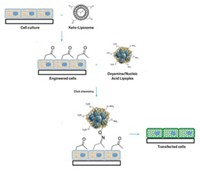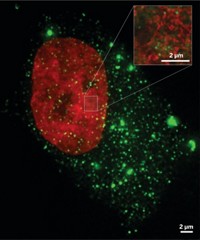Advertisement
Grab your lab coat. Let's get started
Welcome!
Welcome!
Create an account below to get 6 C&EN articles per month, receive newsletters and more - all free.
It seems this is your first time logging in online. Please enter the following information to continue.
As an ACS member you automatically get access to this site. All we need is few more details to create your reading experience.
Not you? Sign in with a different account.
Not you? Sign in with a different account.
ERROR 1
ERROR 1
ERROR 2
ERROR 2
ERROR 2
ERROR 2
ERROR 2
Password and Confirm password must match.
If you have an ACS member number, please enter it here so we can link this account to your membership. (optional)
ERROR 2
ACS values your privacy. By submitting your information, you are gaining access to C&EN and subscribing to our weekly newsletter. We use the information you provide to make your reading experience better, and we will never sell your data to third party members.
Biological Chemistry
Genetic engineering through click chemistry
Method gets nucleic acids into cells by first modifying cell surfaces
by Alla Katsnelson, special to C&EN
June 1, 2017
| A version of this story appeared in
Volume 95, Issue 23

Gene therapy and many types of biological research use a process called transfection to efficiently deliver nucleic acids into cells. Many transfection approaches for mammalian cells rely on electrostatics: Cationic reagents bind to negatively charged nucleic acids and form ionic complexes that cells can pull inside via a mechanism known as endocytosis. The concentration of positive charge in the reagents can kill cells, however, and the process works poorly for some types of cells.
Now researchers report a click-chemistry-based transfection technique, dubbed SnapFect, which relies on bio-orthogonal molecules—a class of chemically reactive compounds that don’t interfere with biological systems (ACS Cent. Sci. 2017, DOI: 10.1021/acscentsci.7b00132).
The team, led by Muhammad N. Yousaf of York University, designed nanoparticle liposomes carrying a ketone ligand. When added to cultured cells, they fuse into the cell membrane within seconds, leaving the ligand exposed on the cells’ surfaces. Meanwhile, the researchers created lipid complexes decorated with oxyamines that hold nucleic acids. When these complexes were added to the cells, their oxyamines reacted with the cell surface ketones. The cells then pulled the resulting membrane-bound nucleic acid complex inside via endocytosis, and the nucleic acid could be expressed by the cells’ machinery.
Yousaf’s team compared the performance of two widely used transfection kits—Lipofectamine (Life Technologies) and ViaFect (Promega)—with SnapFect, which is now for sale via Yousaf’s company, OrganoLinX. SnapFect transfected cells with a 68% overall efficiency, while the other two did so with 19% and 29% efficiency, respectively.
“It’s an interesting step forward,” says James H. Eberwine, a molecular neurobiologist at the University of Pennsylvania. Eberwine adds that researchers often optimize transfection techniques for their particular applications and achieve much higher efficiencies than those noted in this study. “I would certainly try it,” he says, to see how the efficiency stacks up in a real-world context.




Join the conversation
Contact the reporter
Submit a Letter to the Editor for publication
Engage with us on Twitter